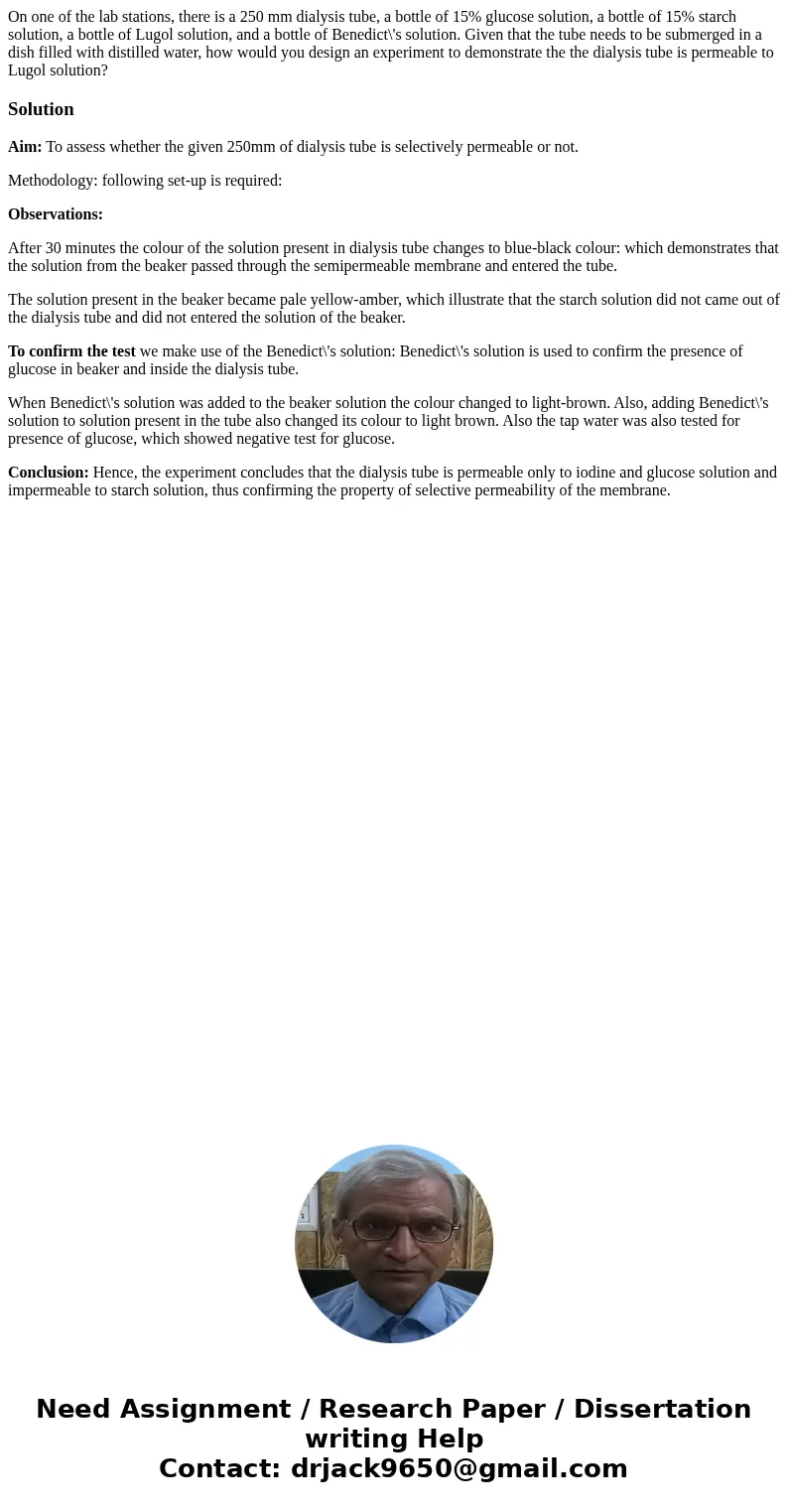On one of the lab stations there is a 250 mm dialysis tube a
On one of the lab stations, there is a 250 mm dialysis tube, a bottle of 15% glucose solution, a bottle of 15% starch solution, a bottle of Lugol solution, and a bottle of Benedict\'s solution. Given that the tube needs to be submerged in a dish filled with distilled water, how would you design an experiment to demonstrate the the dialysis tube is permeable to Lugol solution?
Solution
Aim: To assess whether the given 250mm of dialysis tube is selectively permeable or not.
Methodology: following set-up is required:
Observations:
After 30 minutes the colour of the solution present in dialysis tube changes to blue-black colour: which demonstrates that the solution from the beaker passed through the semipermeable membrane and entered the tube.
The solution present in the beaker became pale yellow-amber, which illustrate that the starch solution did not came out of the dialysis tube and did not entered the solution of the beaker.
To confirm the test we make use of the Benedict\'s solution: Benedict\'s solution is used to confirm the presence of glucose in beaker and inside the dialysis tube.
When Benedict\'s solution was added to the beaker solution the colour changed to light-brown. Also, adding Benedict\'s solution to solution present in the tube also changed its colour to light brown. Also the tap water was also tested for presence of glucose, which showed negative test for glucose.
Conclusion: Hence, the experiment concludes that the dialysis tube is permeable only to iodine and glucose solution and impermeable to starch solution, thus confirming the property of selective permeability of the membrane.

 Homework Sourse
Homework Sourse